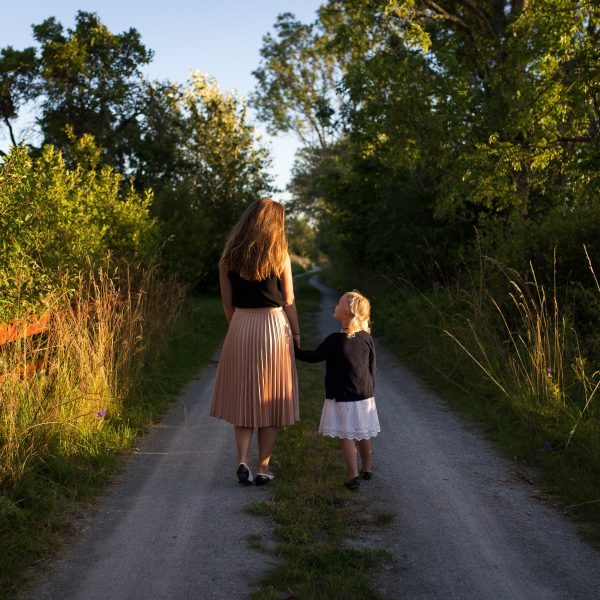Almost one in three have been sexually abused as a child, generally more than once, and often with significant and lifelong impacts.
The National Centre for Action on Child Sexual Abuse has released findings from more than 4,000 adults in a new study examining the community’s attitudes towards, knowledge of, and responses to child sexual abuse.
The data reveal some troubling findings, with pervasive and harmful community norms and attitudes that act to enable child sexual abuse to continue.
What are social norms?
Social norms are “rules” shared among people in a particular society, community, or group, and define what is considered “normal” and appropriate behaviour within the group.
These rules are often unwritten and not openly discussed.
These norms influence what people do (and don’t do) in many aspects of life, including preventing and responding to child sexual abuse.
Why do they matter?
Some cultures’ norms and attitudes limit disclosure of abuse.
In our study, 62% were pretty sure they knew someone who had been sexually abused as a child.
Yet only 9% had directly been told by a child about being sexually abused, while 35% had been told by an adult about historical child sexual abuse.
These low rates suggest there are forces at play that limit talking about child sexual abuse.
Some in the community believe it’s not acceptable to discuss child sexual abuse. In response to a hypothetical disclosure by an adult friend, about one in ten thought it was very/extremely important to tell their friend that it’s best not to talk about it at all.
Some (5%) reported they would try to avoid their friend.
What else did the research reveal?
There was also evidence community members didn’t think child sexual abuse was an important problem or that it affected them directly.
Around two in three adults felt they were not directly affected or were unsure if they were affected by child sexual abuse. More than half didn’t think child sexual abuse happened where they live.
One in ten thought child sexual abuse receives too much media coverage.
Some norms and attitudes also limit intervention to stop child sexual abuse.
We found that of those who discovered or received a child’s disclosure about sexual abuse, less than half had a supportive conversation with the child (about 40%) and/or reported to authorities like police or child protection agencies (about 30%).
Also, almost one in three adults were “not at all” confident about how to talk to the parent/carer of a child they suspected had been sexually abused. More than a quarter (28%) felt “not at all” confident about how to start a conversation with the child they suspected had been sexually abused.
Not having these conversations or not reporting maintains secrecy around child sexual abuse. It can send a message to victims and survivors not to talk about it, or that nothing will be done to stop the abuse.
Though the lack of intervention may be due to a lack of confidence, we also found adults held attitudes that children can’t always be believed (22%) or were too unreliable to take their word over an adult’s (18%).
These attitudes mean many children won’t be believed and protected if they disclose sexual abuse.
Some norms and attitudes increase acceptance of child sexual abuse, or blame victims, especially adolescents.
Alarmingly, 40% of respondents in the study thought older children were responsible for actively resisting an adult’s sexual advances, and 12% believed adolescent girls who wear very revealing clothing are “asking” to be sexually abused.
Adding to this, 13% believed children who act “seductively” are at least partly to blame if an adult responds sexually, while 8% thought obedient children are less likely to experience child sexual abuse, implying “good” children won’t be sexually abused.
These harmful attitudes misdirect the blame for the abuse onto the victim, making it unsafe for them to disclose and at the same time, making it acceptable for adults to stay silent.
Blaming victims maintains the status quo of unacceptably high levels of child sexual abuse and causes further harm.
Where to from here?
Putting an end to the sexual abuse of children in Australia requires concerted and co-ordinated action at all levels of society.
Global initiatives offer some guidance on how shifting entrenched and harmful attitudes and norms can change behaviours.
At a minimum, we must challenge gender inequality and power imbalances, promote equitable relationships and shared responsibilities. Mobilisation programs intervening directly at the community level and initiatives with specific populations who hold harmful and problematic attitudes are also promising in preventing child sexual abuse.
Now we have benchmarks on the community’s attitudes towards child sexual abuse, we can measure the effectiveness of Australia’s efforts for change.
It is everyone’s responsibility to know the signs, listen, believe and act in response to child sexual abuse.![]()
Andrea de Silva, Adjunct professor, Monash University and Amanda L. Robertson, Adjunct Research Fellow – Griffith Criminology Institute, Griffith University
This article is republished from The Conversation under a Creative Commons license. Read the original article.



















